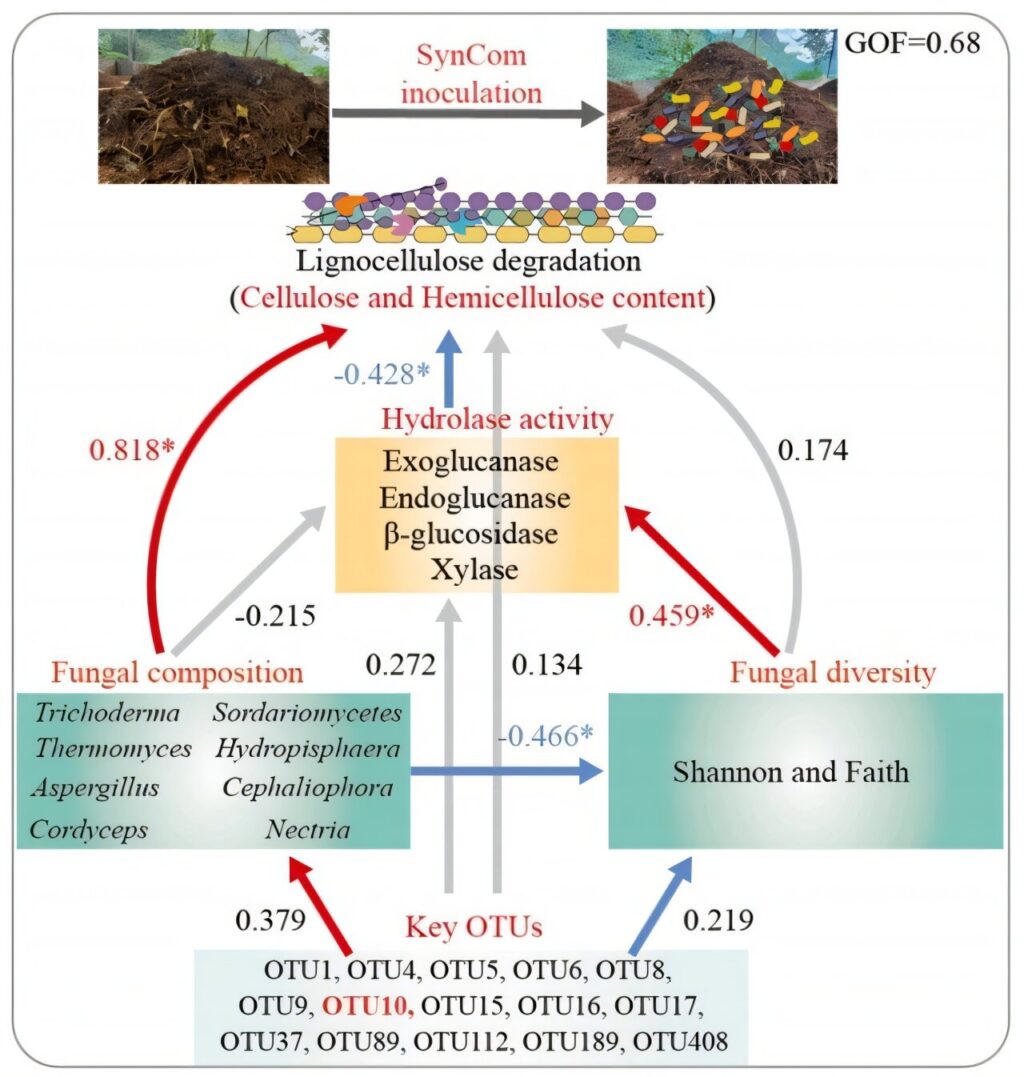
A groundbreaking advancement in sustainable agriculture has emerged from the Institute of Subtropical Agriculture of the Chinese Academy of Sciences. Led by Prof. Li Dejun, researchers have demonstrated how synthetic microbial communities (SynCom) can significantly enhance lignocellulose degradation, improve compost transformation, and promote crop growth. These findings, published in the Chemical Engineering Journal, Bioresource Technology, and Microorganisms, offer promising new strategies for sustainable agricultural practices.
Composting is a cornerstone of modern agriculture, providing an eco-friendly method to process agricultural waste into valuable fertilizers while enhancing soil quality. The application of SynCom, particularly in the degradation of lignocellulose, has emerged as a pivotal strategy to boost composting efficiency. At the same time, the health of crops is intricately linked to the balance of soil microbial communities. SynCom can regulate rhizosphere microbiota, thereby enhancing nutrient absorption and stress resistance in crops, leading to improved growth and disease resistance.
Unveiling Mechanisms of SynCom in Composting
The research team uncovered crucial mechanisms by which SynCom promotes lignocellulose degradation during the thermophilic phase of composting. The inoculation with SynCom was shown to significantly reduce lignin, cellulose, and hemicellulose content, while simultaneously boosting the activity of essential degradation enzymes such as laccase, manganese peroxidase, cellulase, and xylanase.
Metagenomic analysis revealed that synthetic microbial communities enhance microbial metabolic pathways related to carbohydrate, amino acid, vitamin, and energy metabolism. This optimization at the gene level during composting results in a more efficient and effective transformation of compost materials.
“Synthetic microbial communities significantly enhance microbial metabolic pathways, optimizing the structure and function of the microbial community during composting,” the study notes.
Fungal Community Regulation
Moreover, SynCom enhances compost material transformation by regulating fungal communities. Researchers found that SynCom inoculation increased the relative abundance of key fungal genera, such as Cephaliophora and Thermomyces, and significantly boosted the activity of functional groups related to lignocellulose degradation, including wood-decaying fungi and saprophytic fungi.
The significant enrichment of the species Hydropisphaera (OTU10) was identified as a critical driver for lignocellulose degradation, improving the quality of organic fertilizer post-compost maturity.
SynCom’s Impact on Crop Growth
In addition to composting, the research explored the application of SynCom in promoting pepper growth. SynCom inoculation resulted in notable increases in plant height, stem diameter, leaf number, chlorophyll content, and root vitality of pepper plants.
High-throughput sequencing revealed that SynCom inoculation significantly increased the richness of rhizosphere microbial communities and the abundance of key genera, particularly Sordariomycetes and Pseudarthrobacter, which are closely correlated with crop growth.
“SynCom inoculation significantly increased the richness of rhizosphere microbial communities, enhancing crop growth,” the researchers reported.
Implications for Sustainable Agriculture
Collectively, these studies highlight SynCom inoculation as an effective, environmentally friendly approach to agricultural waste management and crop yield enhancement. The findings provide a promising technical foundation for advancing sustainable agriculture and green farming practices.
As research into SynCom deepens, its potential in optimizing composting and agricultural production will be increasingly realized, playing a significant role in promoting the development of green agriculture. This advancement aligns with global efforts to enhance food security and environmental sustainability.
For more detailed insights, refer to the studies published in the Chemical Engineering Journal, Bioresource Technology, and Microorganisms, which provide comprehensive analyses of these findings and their implications for the future of agriculture.







